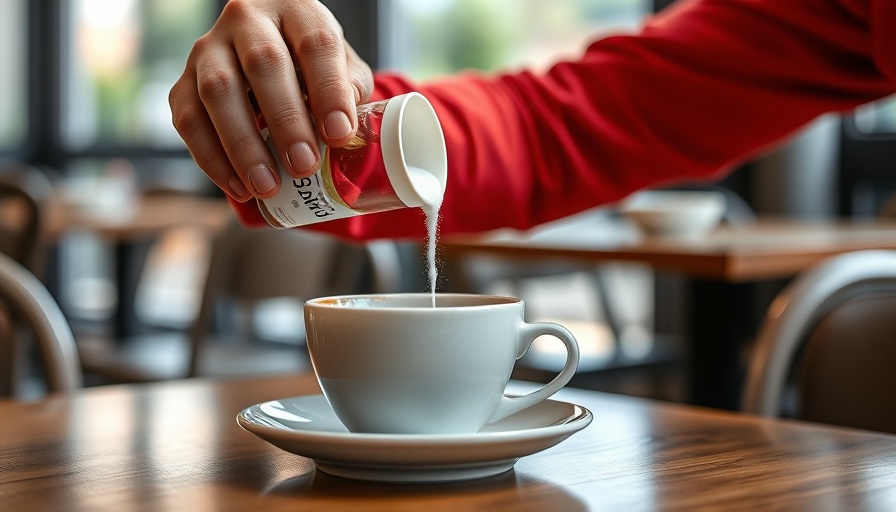
Why Your Sweetener Choice Matters for Weight Management
In a world increasingly aware of health and wellness, many people turn to sugar substitutes like sucralose, hoping to cut calories without sacrificing the sweetness they love. However, recent research reveals that this common zero-calorie sweetener could create unexpected cravings. A study published in Nature Metabolism investigated how sucralose affects our brains and appetite, raising concerns about its efficacy in weight management, especially for those on a health journey.
The Science Behind Sucralose and Hunger Signals
Researchers at the Keck School of Medicine found that sucralose consumption alters brain activity, particularly in the hypothalamus, which plays a crucial role in regulating appetite. Unlike regular sugar, sucralose does not stimulate the release of appetite-suppressing hormones like insulin and GLP-1, leading to increased hunger over time. This phenomenon can be particularly pronounced in individuals with obesity, hinting at the complexities of dietary choices.
The Brain’s Expectations: A Mismatch with Reality
According to Dr. Kathleen Alanna Page, the study's lead author, the brain expects a caloric influx when tasting sweetness. When this expectation is not met—due to sucralose not delivering the calories anticipated—it can confuse hunger signals. As a result, the brain craves more food, which could lead to overeating and undermine weight loss efforts. Understanding this mechanism can empower individuals to make more informed choices about sweeteners in their diets.
The Broader Implications for Diet and Well-being
This study sheds light on the larger conversation around artificial sweeteners and their impacts on mental clarity and emotional well-being. For many, the quest for a healthier lifestyle involves choosing low-calorie options over traditional sweets. However, as emerging studies suggest, the unintended consequences such as increased hunger and cravings can exacerbate weight management challenges. Hence, it’s crucial to reassess our reliance on these substitutes as part of our wellness journey.
Future Research Directions: Why Children Matter
With children being significant consumers of sugar substitutes, follow-up studies are underway to explore how calorie-free sweeteners influence developing brains. Understanding these implications is vital as it can help inform dietary guidelines not only for children but for families aiming for healthier eating habits. The journey to better health begins with educating families on the impacts of their food and drink choices.
Empowering Your Health Choices: Alternatives You Can Trust
For those seeking to manage weight effectively while maintaining satisfaction in their diets, various alternatives exist. Using whole foods, such as fruits for natural sweetness, can provide not only flavor but also essential nutrients. Emphasizing mindful eating—a practice that encourages savoring food and recognizing fullness—can shift focus from crutching on sweeteners to nourishing your body with whole, nutrient-dense foods.
Steps Towards Better Nutrition: Take Action Today
Now that we understand some of the potential pitfalls of artificial sweeteners like sucralose, taking proactive steps can enhance your health. Consider exploring healthy recipes that incorporate natural sweeteners or adopting clean eating practices that emphasize whole foods. Additionally, engaging in regular physical activities such as yoga or running can complement dietary adjustments, boosting mental clarity and emotional well-being.
This raises the essential question for everyone embarking on their health journeys: Are you ready to rethink your approach to sweetness for a healthier lifestyle? By making informed decisions about sweeteners and embracing a holistic perspective on nutrition, each of us can pave the way for better health outcomes for ourselves and our loved ones. Dive deeper into your health journey today by exploring various wellness practices and resources available to support your goals.
 Add Row
Add Row  Add
Add 




Write A Comment